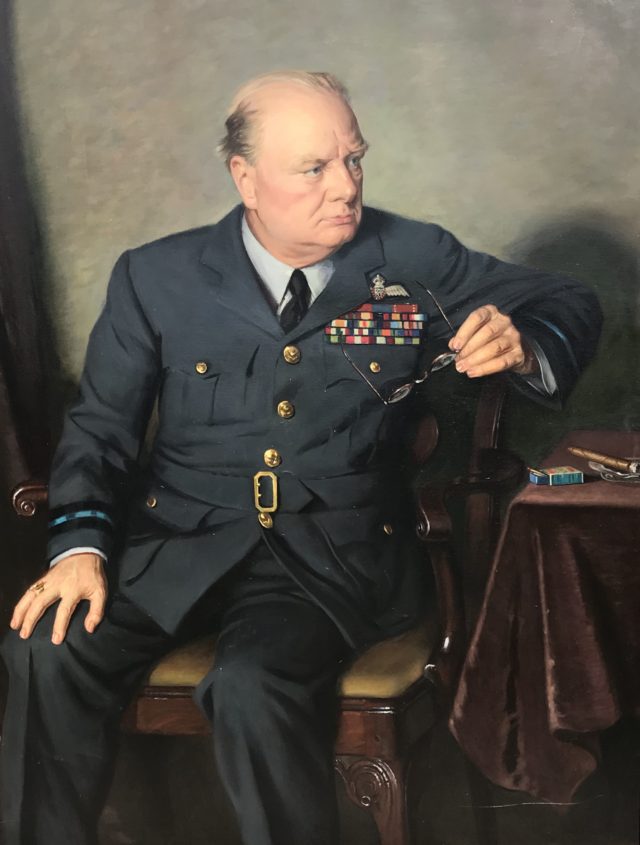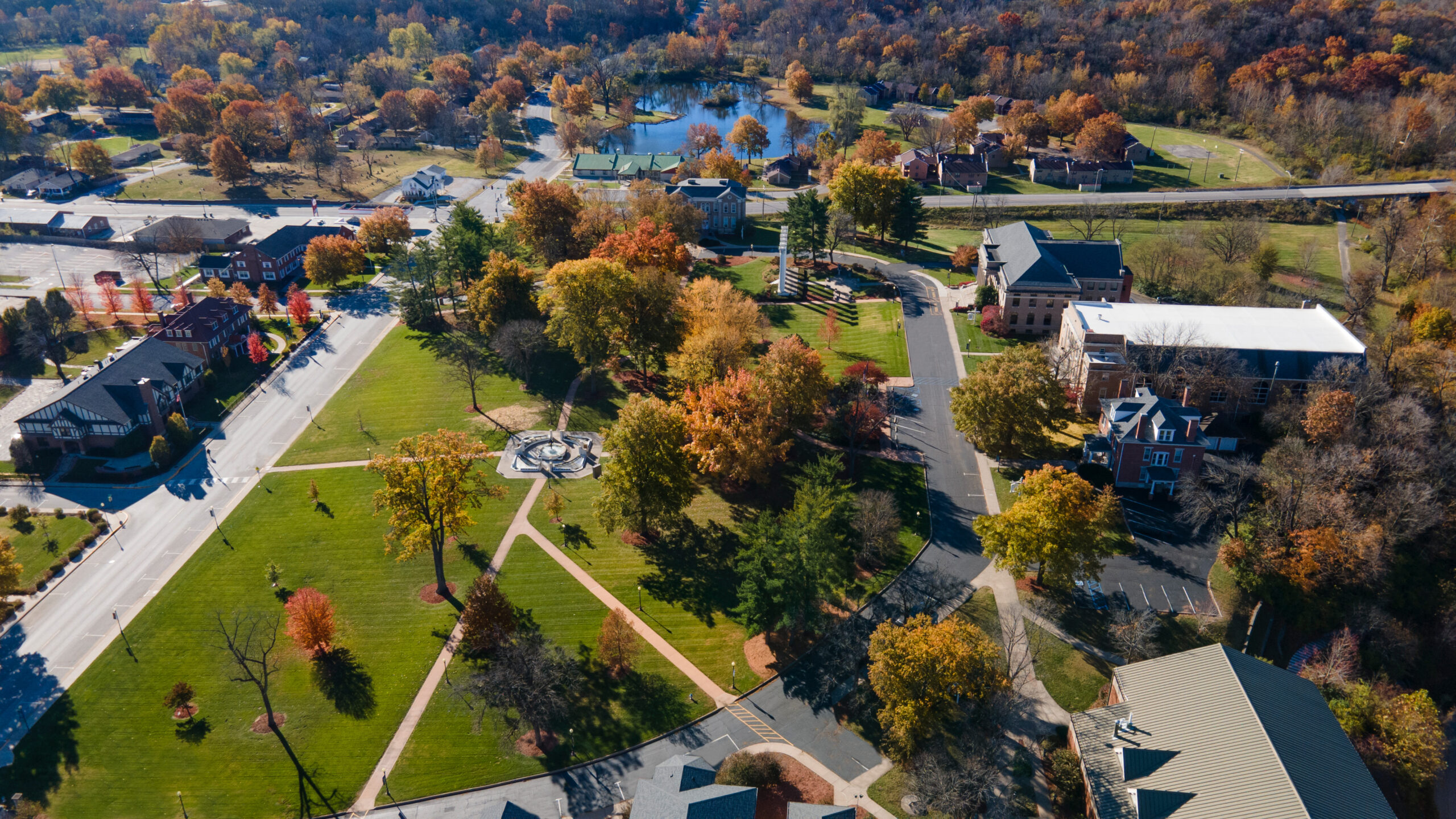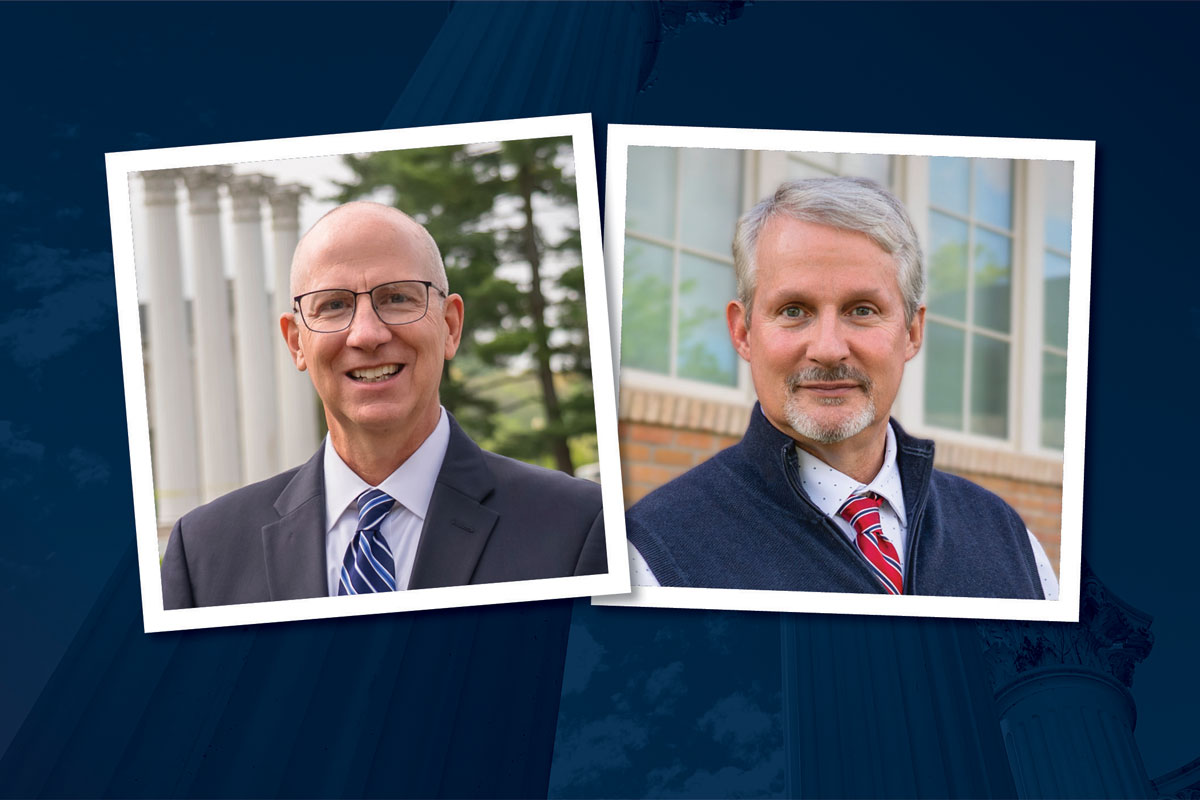The above portrait of Sir Winston Churchill by Adrian Lamb is on display as part of new exhibit, The Few: Winston Churchill and the Royal Air Force, at America’s National Churchill Museum. The painting can be viewed during the ceremony, which will salute the Eagle Squadrons and Boeing Co./Douglas Aircraft for the planes that helped save London in WWII.
Great Britain’s Royal Air Force will present its official flag in a special ceremony next month at America’s National Churchill Museum to reaffirm the special relationship between the United States and Great Britain. The ceremony also will commemorate the American airmen and women who volunteered to fight the Nazis over London before the United States entered World War II.
The public is invited to attend this special presentation at 11 a.m., Wednesday, August 14, in the Museum’s historic Church of St. Mary the Virgin, Aldermanbury.
Commodore James Linter OBE, the RAF’s Air Attaché in Washington, will present the flag (often called “an ensign”) to the Museum in honor of the legendary Eagle Squadrons, three squadrons of American volunteer pilots who valiantly fought for Great Britain before the United States entered WWII.
The RAF flag will be on display in the church — the official chapel of the Eagle Squadrons — which today are assigned to the U.S. Air Force’s 4th Fighter Group at Seymour Johnson Air Base in North Carolina.
Executives from Boeing, which acquired St. Louis-based McDonnell-Douglas Aircraft in 1997, also will be saluted for the Boeing and Douglas (forerunner to McDonnell-Douglas) fighter planes used by the U.S. and British air forces in World War II.
They included Boeing’s B-17 (The Flying Fortress) and B-29 (The Liberator), and Douglas’s A-20 (Havoc), A-26 (Invader), C-47 (the U.S.’s Skytrain/Britain’s Dakota), C-54 (The Skymaster), and the SBD Dauntless, the primary carrier-based dive bomber in WWII.
Also participating in the ceremony will be Westminster College President Fletcher Lamkin, Ph.D.; Gen. Richard Harding, (Ret.) USAF; Gary D. Joiner, Ph.D., Director of Strategy Alternatives Consortium, Chair & Professor of History Louisiana State University, Shreveport, Louisiana; and Timothy Riley, the Sandra L. and Monroe E. Trout Director and Chief Curator of the Museum.
The Eagle Squadrons were formed in late 1940 when Americans traveled to England from Canada to volunteer to become fighter pilots in the RAF as Great Britain — under the leadership of Prime Minister Winston S. Churchill — desperately and solely defended itself against Adolf Hitler’s German Luftwaffe.
“At the time, the U.S. was not at war, and these young pilots, many of them roguish adventurous types, took great personal and legal risks to travel to England to fight with the RAF to save Britain and defeat tyranny,” Riley said. “Churchill held these brave Americans in the highest regard and considered their help as an essential building block to the ‘special relationship’ he often referred to in describing the connection between the U.S. and UK,” Riley added.
At first, to skirt American laws that prohibited them from fighting for a foreign entity, the volunteers were listed as Canadian or South African. But in September 1940, Churchill intervened, and the Air Ministry officially organized the 71st, 121st, and 133rd American Eagle Squadrons as a branch of the RAF.
They fought to save London in the Battle of Britain and in other air wars across Europe at the start of WWII. Once the United States entered the war in 1942, the 8th U.S. Air Force was formed in England, and the three Eagle Squadrons became part of the “Mighty Eighth” U.S. Air Force as the 4th Fighter Group.
Despite their flying prowess, nearly 100 of the 244 highly decorated members of the Eagle Squadrons never made it home. 
One of those airmen was 1st Lieutenant John F. Lutz, of Fulton, MO, an alumnus of Westminster College. He joined the 71st Eagle Squadron in 1941 at the age of 23. On May 4, 1943, Lutz’s plane was hit by enemy fighters over the English Channel, and he was forced to bail out. His body was never recovered.
America’s National Churchill Museum has a permanent exhibit honoring Lt. Lutz.
The ceremony also will open a new exhibit — The Few: Winston Churchill and the Royal Air Force — that will display rarely exhibited items from the Museum’s collection as well as archives related to the Eagle Squadrons and the Battle of Britain.
America’s National Churchill Museum on the campus of Westminster College in Fulton is the only museum in North America that is fully dedicated to commemorating the life and times of Winston S. Churchill, the 20th century’s greatest statesman.
The museum is celebrating its 50th anniversary this year. It was established in 1969 on the Westminster campus, where Churchill delivered his famous “Sinews of Peace” speech, often called his “Iron Curtain” speech, on March 5, 1946.

This is the editorial account for Westminster College news team. Please feel free to get in touch if you have any questions or comments.







You must be logged in to post a comment.